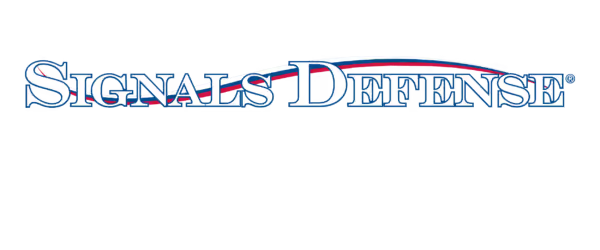RFOIL® ULTRA NT Radiant BARRIER Foil
FREQUENTLY ASKED QUESTIONS
rFOIL® NT Radiant Barrier Foil for SCIF’s by Covertech Fabricating is fully compliant with Sensitive Compartmented Information Facility (SCIF) applications. Below we answer some of the frequently asked questions about this special purpose product and its effective RF attenuation barrier against a wide range of RF Frequencies.
ABOUT RFOIL
What is rFoil made of?
rFoil is a heavy-duty radiant barrier sheet made up of a single layer of woven polyethylene material, bonded and sandwiched between two highly reflective aluminum surfaces.
Where is rFoil manufactured?
rFoil is manufactured in Etobicoke, ON, Canada
What is the thickness of rFoil?
rFoil has a thickness of 7 mil
Why would I use rFoil and not another radiant barrier foil?
Ultra NT rFoil has been used for RF shielding inside walls for over 20 years, more than any other radiant barrier.
Why would I use rFoil instead of foil-backed drywall?
rFoil is purpose-built for RF shielding, not just a radiant heat barrier like most foil- backed drywall. Joint conditions and interfacing with other surfaces, frames, penetrations, etc cannot be done with drywall, thus requiring the use of the flexible and durable rFoil.
What is the difference between rFoil and copper shielding foil?
rFoil is comprised of aluminum and not copper.
Is rFoil the same thing as tin foil?
No. Although it seems they are the same in principle, rFoil is two layers of aluminum with a no-tear woven layer in between.
PERFORMANCE
Is rFoil ‘rated’ for 80dB of RF shielding?
Specification data shown is the lab performance. This does not indicate its RF shielding performance after installation. Final performance is dependent on many factors including installation method particularly at joints and overlaps, adjacent conditions and materials, and other shielding countermeasures.
Does perforated rFoil provide the same RF attenuation as the solid?
No. While perforated rFoil still provides very high RF shielding, the perforated version provides slightly less RF attenuation.
Solid rFoil: Minimum Shielding Effectiveness (100MHz – 10GHz): 85 dB
Perforated rFoil: Minimum Shielding Effectiveness (100MHz – 10Ghz): 67 dB
Why doesn’t a room with rFoil installed on all sides prevent a cell phone from working?
Modern smart phones are very powerful and will boost signal to connect to the tower.
What sort of RF attenuation can I expect after rFoil installation?
This depends on installation method and adjacent conditions. Every building or room is very different and constructed by different individuals. Testing should be performed by a professional to determine final shielding effectiveness.
To achieve a higher attenuation, will adding multiple layers of r foil and EM paint be enough?
There is a high chance of achieving that performance with rFoil and paint on the wall surfaces. However even this is contingent on penetrations, doors, etc. that may decrease shielding performance of the whole wall or room.
Multiple layers of rFoil directly on each other do not necessarily increase shielding performance in our experience. Multiple layers seem to do better when there is space or an airgap in between each layer.
INSTALLATION
What is used to adhere rFoil to drywall?
Consult with the architect on the specific requirements for your customer. Spray adhesives, brush-applied adhesive, and even staples may be used if proper approvals are provided.
Can I run drywall screws through rFoil and not hurt its RF performance?
rFoil can be penetrated with drywall screws, however black phosphate fine threaded drywall screws are recommended. Drywall screws used to fasten the second layer of drywall must fasten to the same studs.
Can I use staples to adhere rFoil to the drywall?
Some customers may allow this method, but it should be verified with the appropriate architect and security authorities.
Will ceramic tile/adhesive adhere on top of rFoil?
You must verify the adhesive being used will adhere to both rFoil and the tile.
Will carpet tiles adhere on top of rFoil?
Generally, yes self-adhering carpet tiles will sufficiently adhere to rFoil.
Can I pour a concrete slab on top of rFoil?
The aluminum metals in rFoil could react with the components/ingredients of the concrete mix. Any concrete ingredients that could react negatively to aluminum should be avoided.
Can raised access flooring be installed on top of rFoil?
Consult with the architect on this application. However RAF pedestals can be adhered to rFoil.
Can spray fireproofing be applied on top of rFoil?
Yes. Check with local fire code and architectural requirements.
Where/When/Why do I use the perforated rFoil?
If approved by the security authorities for the project, the perforated rFoil may be used in partitions where one does not want to create a vapor barrier.
What is the difference between the standard metalized tape and 3M1170? When/where do I use either?
- The type of tape required is dependent on the accrediting officer for that project.
- The standard metalized tape is conductive only on the top surface, whereas the 3M 1170 is highly conductive throughout the tape including the adhesive. 3M 1170 may be used for patching gaps, holes, or tears.
How do I overlap or join rFoil at the seams?
Consult with the architect on the specific method required for your project. A flat 6” overlap between layers may not be sufficient to meet project requirements.
How do I overlap or join rFoil at ceilings and floors?
Consult with the architect on the specific method required for your project. Overlaps may vary from as little as 18″, or full coverage across a slab or deck may be necessary.
What do I do with rFoil at receptacles or switches?
- Consult with the architect on the customer’s requirements for this condition. Many times recessed outlets and other controls are not permitted to be recessed, and should be surface mounted only, including the servicing conduit.
- rFoil should not come in contact with the metal junction box.
How do I patch holes or rips in rFoil?
An additional rFoil patch with at least 6” overlap and tape. Depending on the size of the patch required, the 3M 1170 tape may be sufficient.
What type of products do you recommend for adhering RF foil to the concrete floor?
There are various means and methods, and they vary depending on which organization this is for, and what the final performance expectations are of the shielding. Please contact us for further discussion.
DO YOU PROVIDE INSTALLATION OF RFOIL PRODUCTS?
No, Signals Defense is a distributor of RFOIL Radiant Barrier Foils and Tapes. For a product quote, please contact us.
GROUNDING
Does rFoil need to be grounded?
We don’t have grounding recommendations or requirements as this is generally subject to accrediting officer’s needs. Understanding the intended performance of the system, and whether grounding helps achieve that performance would be good to know.
Do you have product/system recommendations for grounding rFoil?
Currently, there is no ‘manufacturer-recommended’ basis-of-design or solution for grounding rFoil. The accrediting official who is requesting the grounding should ultimately provide the means and methods on how they want it done and where.
What performance improvement is expected by grounding vs not grounding rFoil?
Only the accrediting officials should weigh-in on the need to ‘ground’ rFoil, as only they are privy to individual project requirements or needs (i.e. what actual performance is required, how is it being tested, what are the threats, what performance improvement is expected by grounding vs not grounding.
CONTACT US FOR ADDITIONAL QUESTIONS ABOUT RFOIL AND RF SHIELDING PRODUCTS.


COMPLEMENTARY PRODUCTS

OFFICE LOCATION
3 Easter Court
Suite L
Owings Mills, MD. 21117



